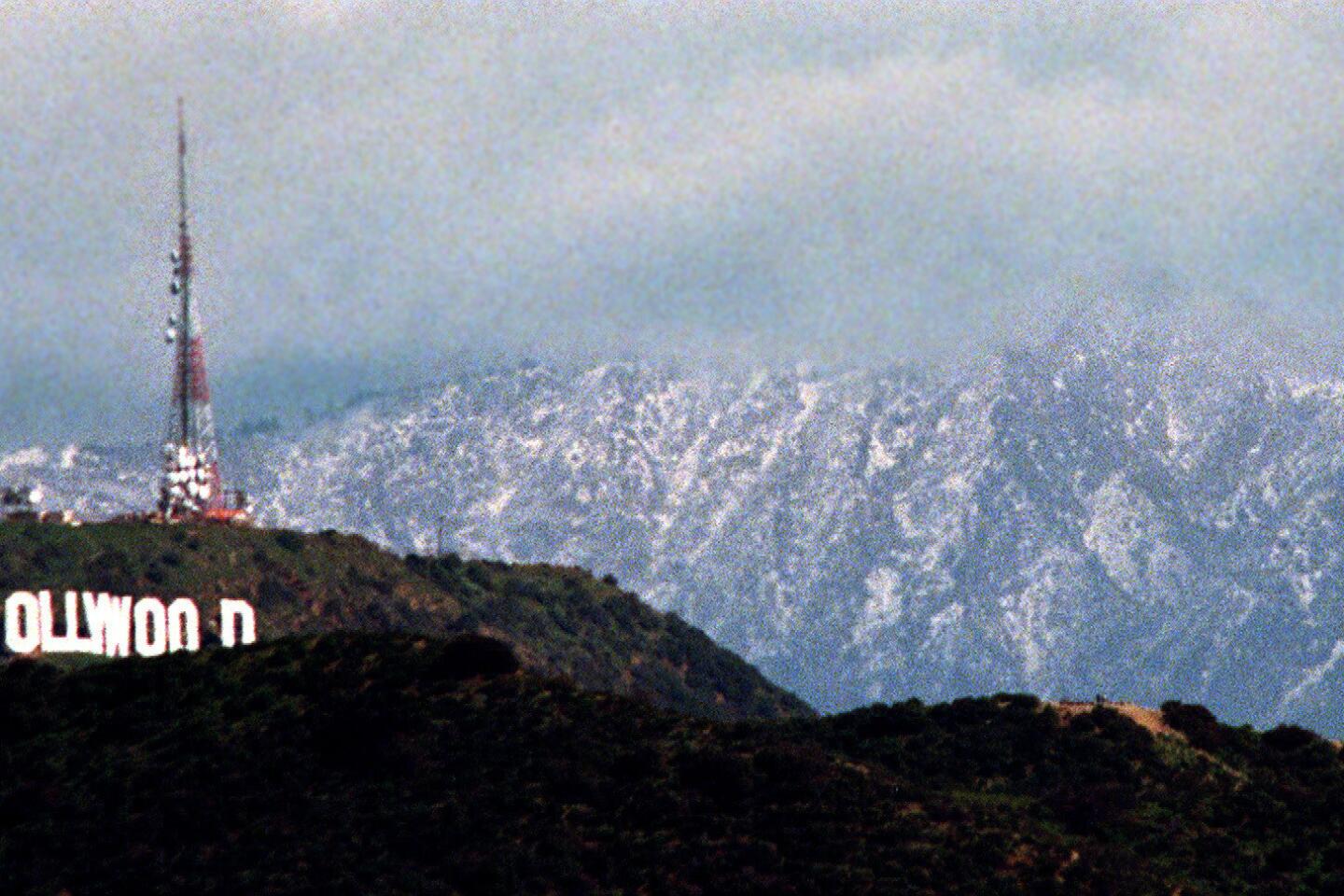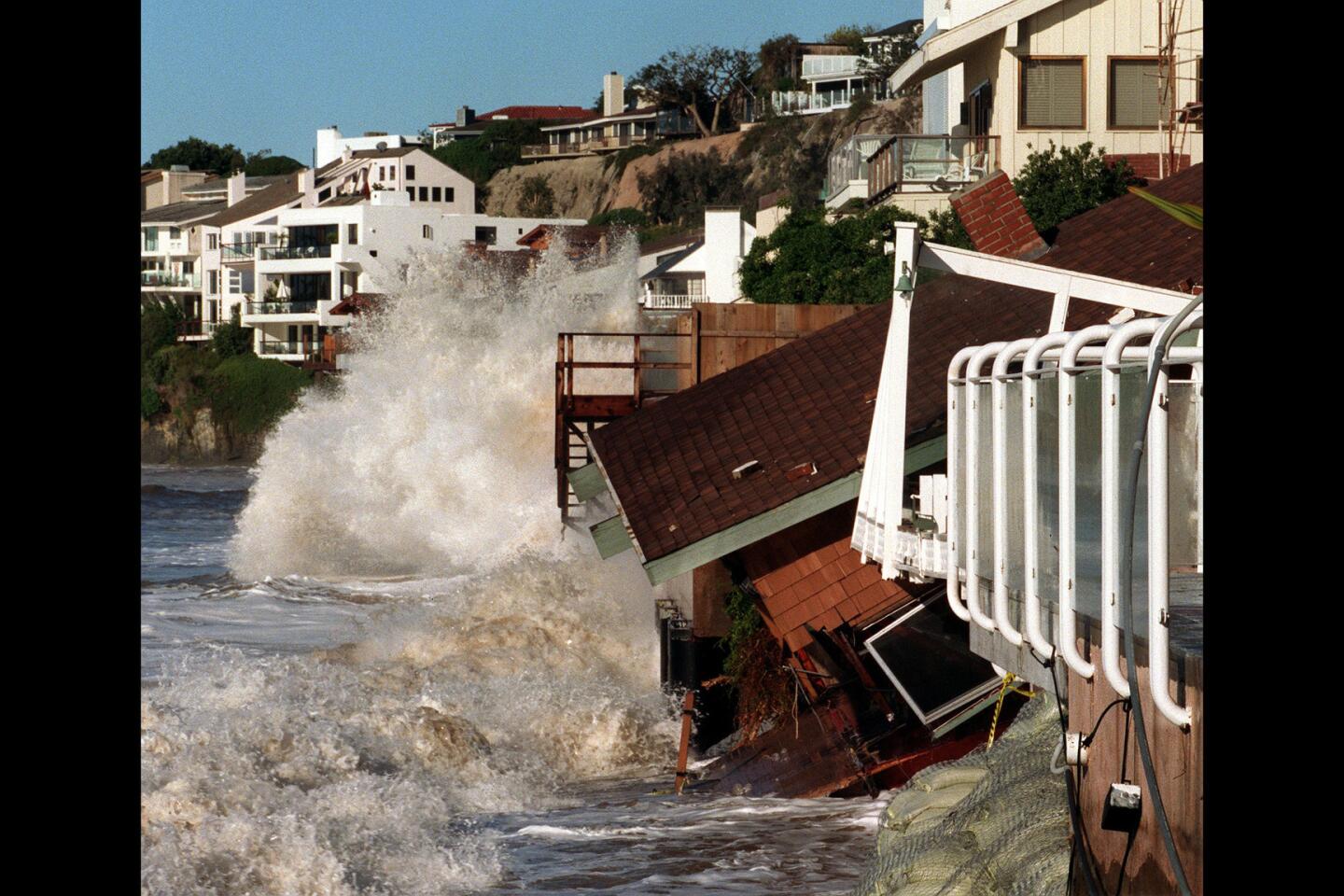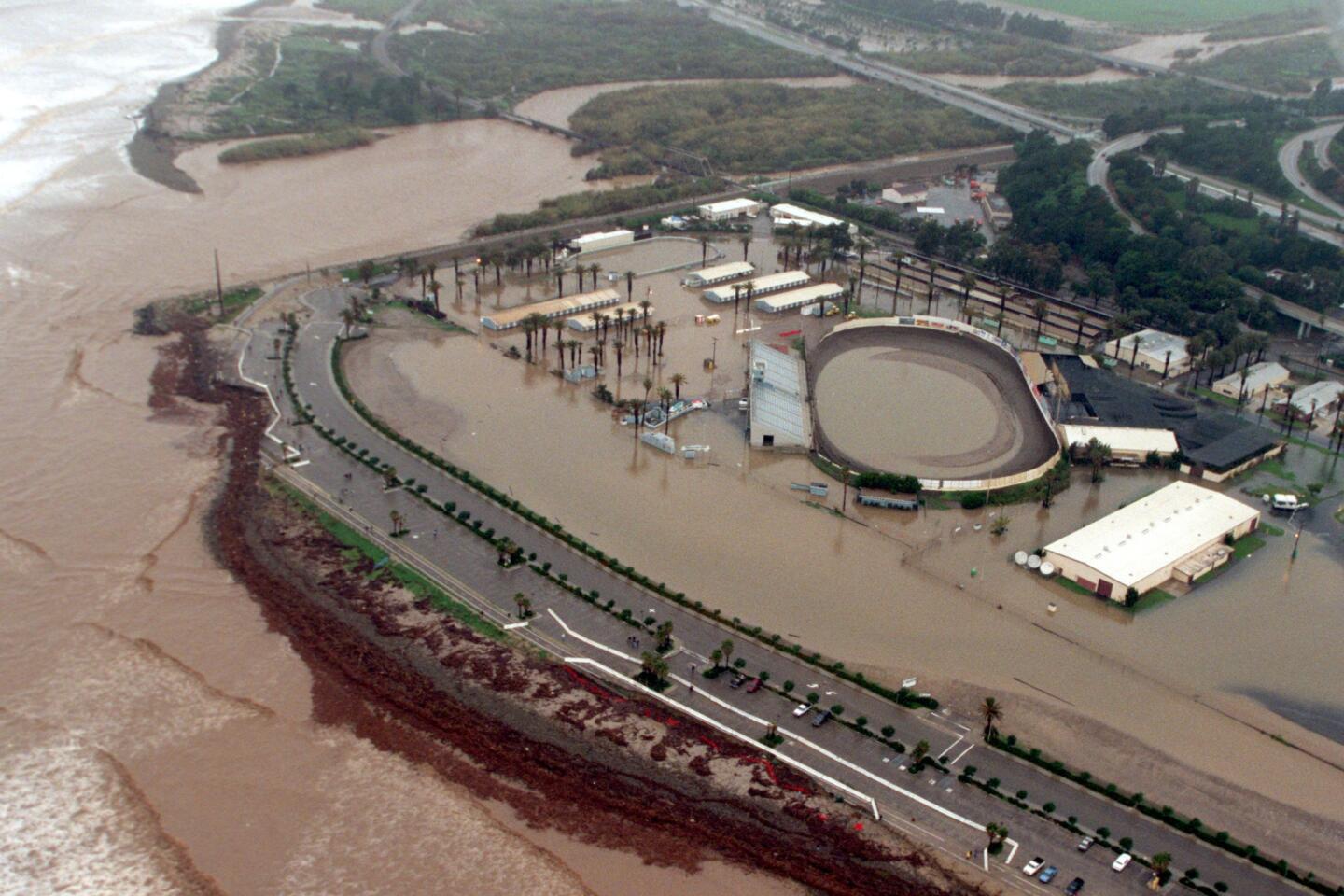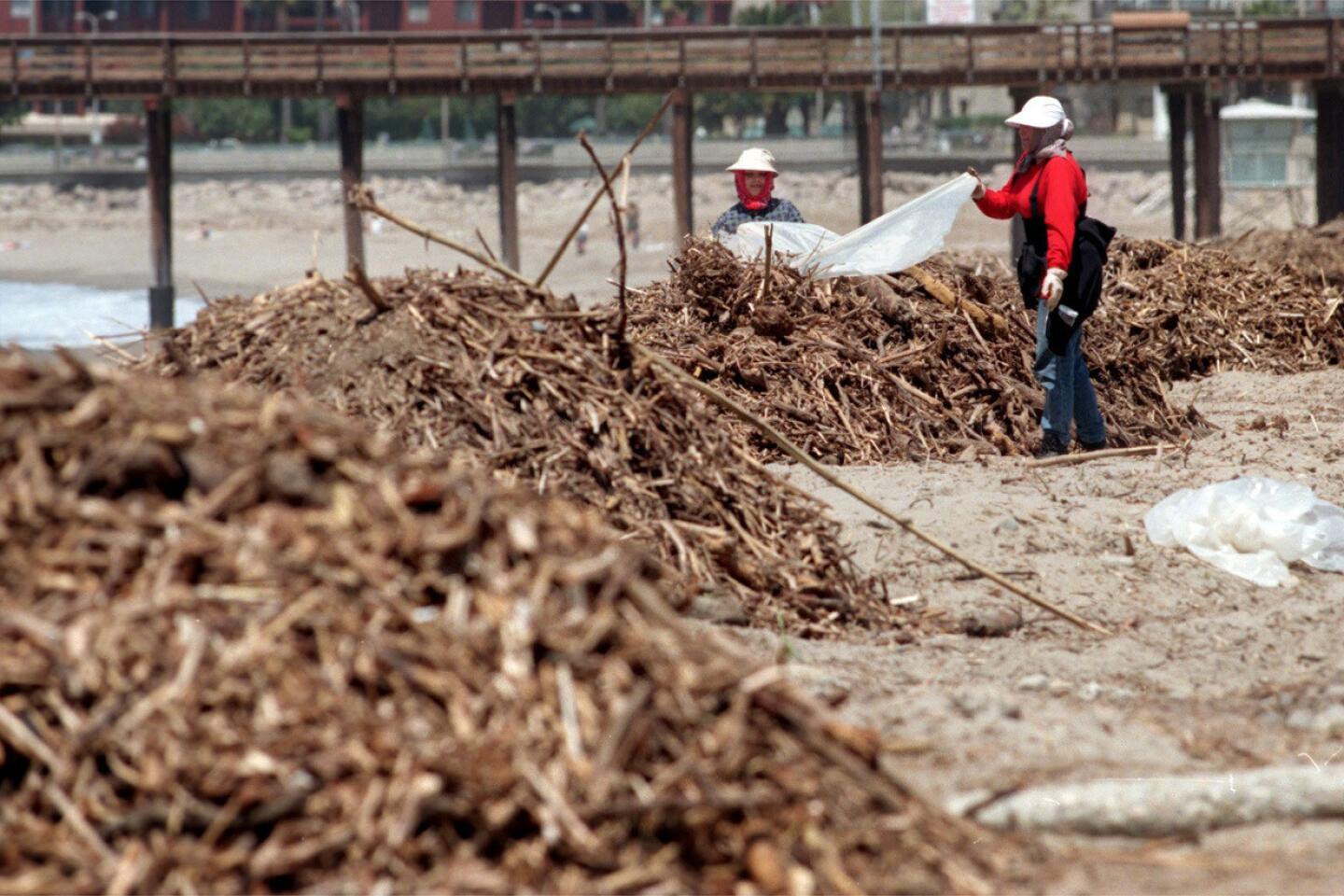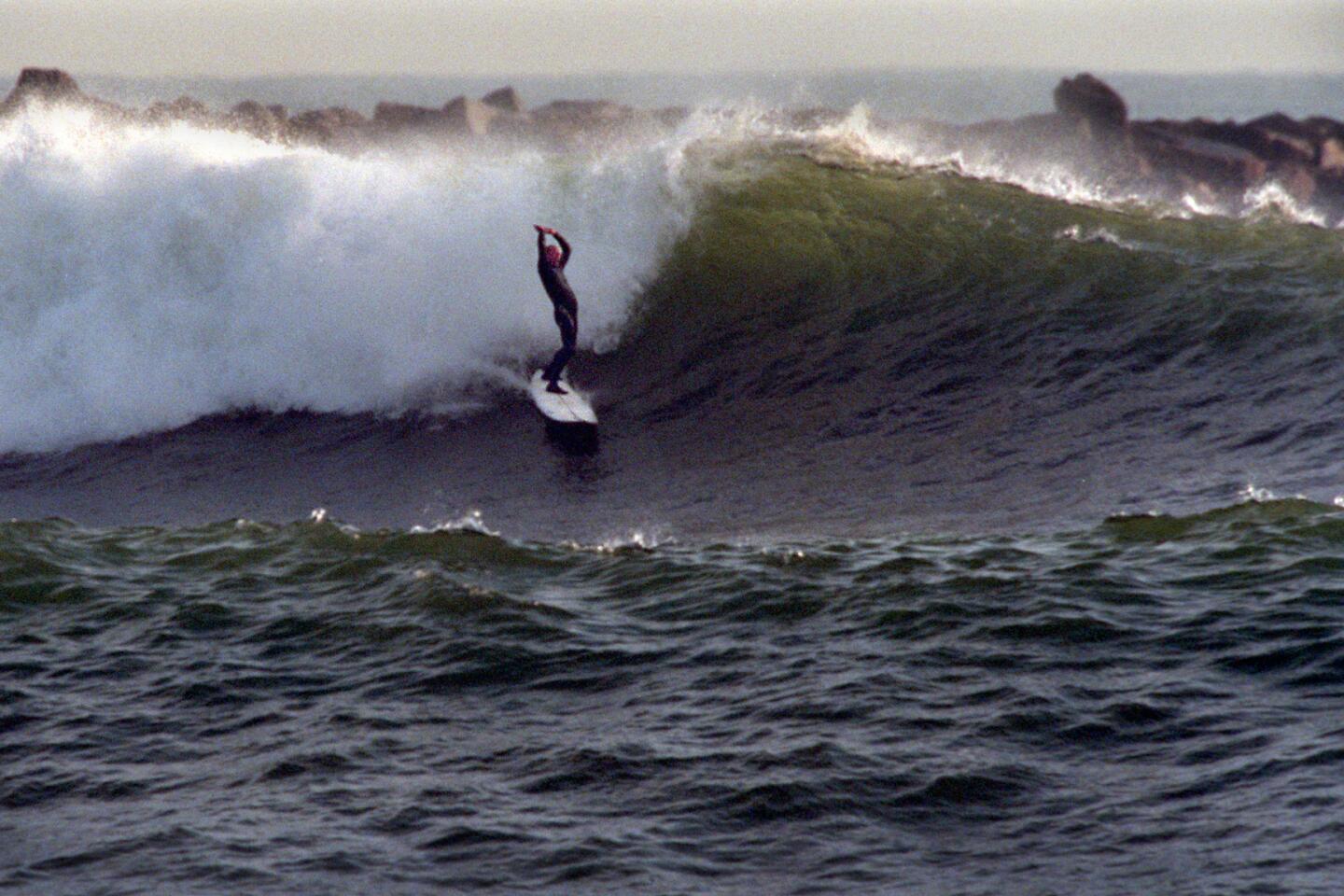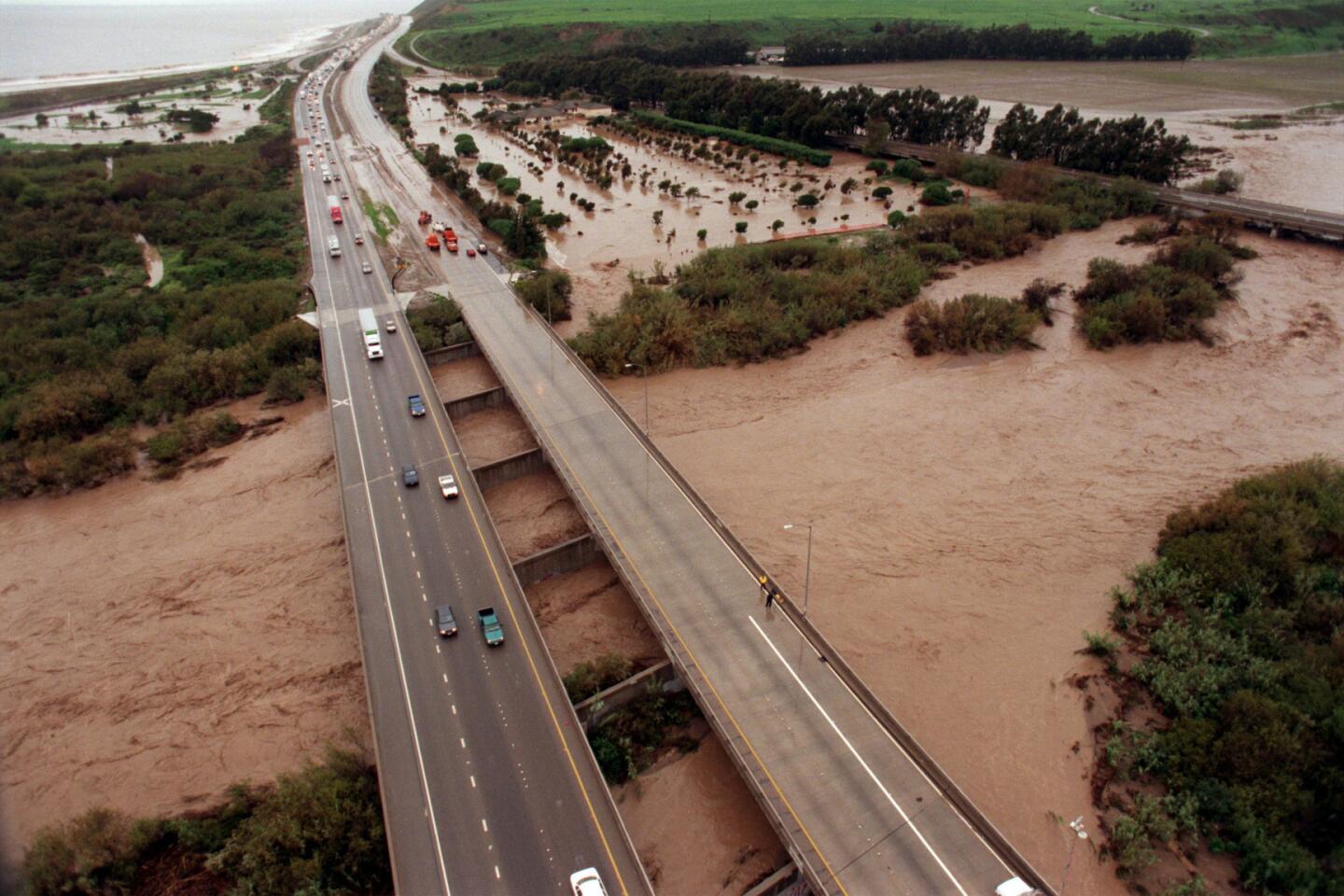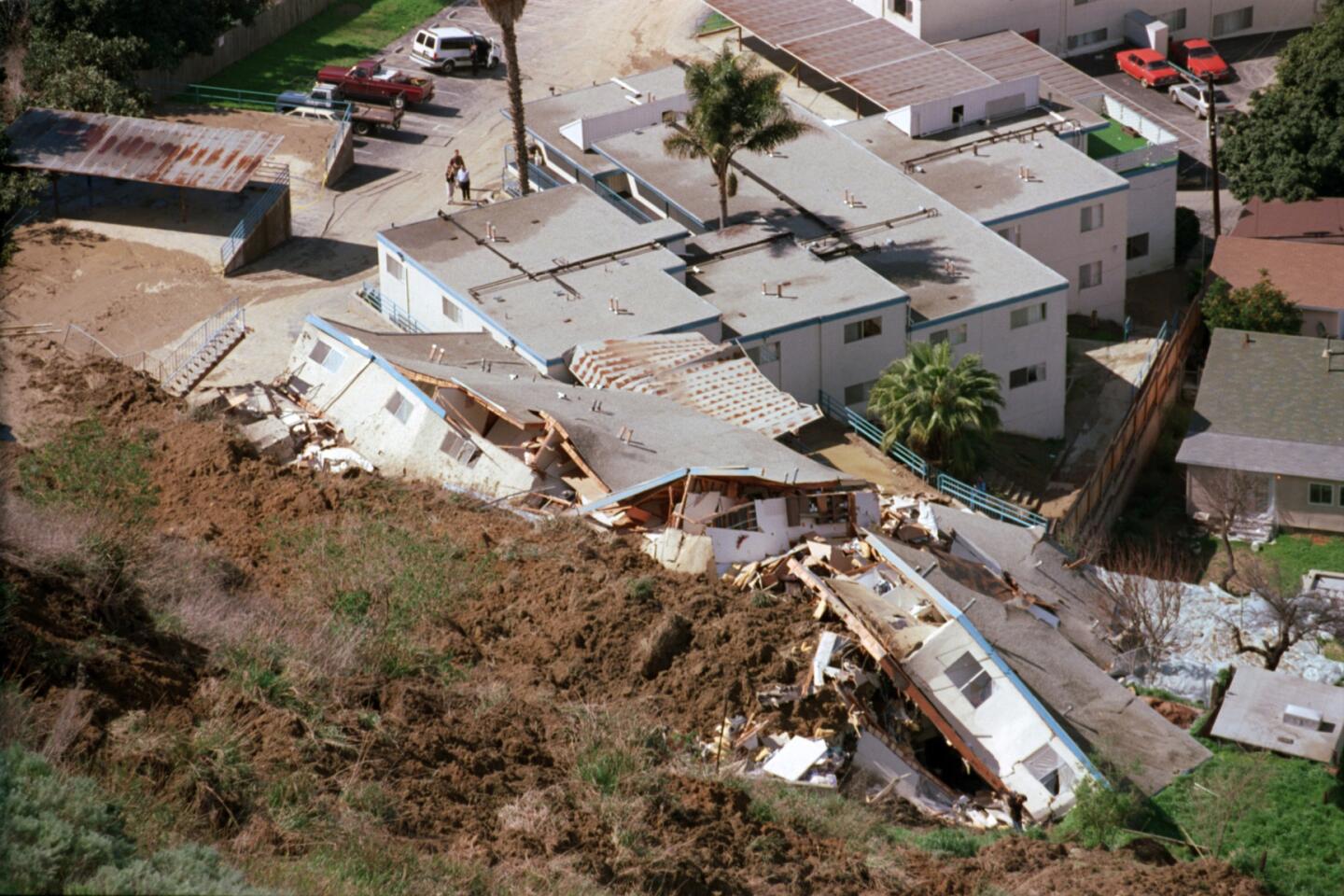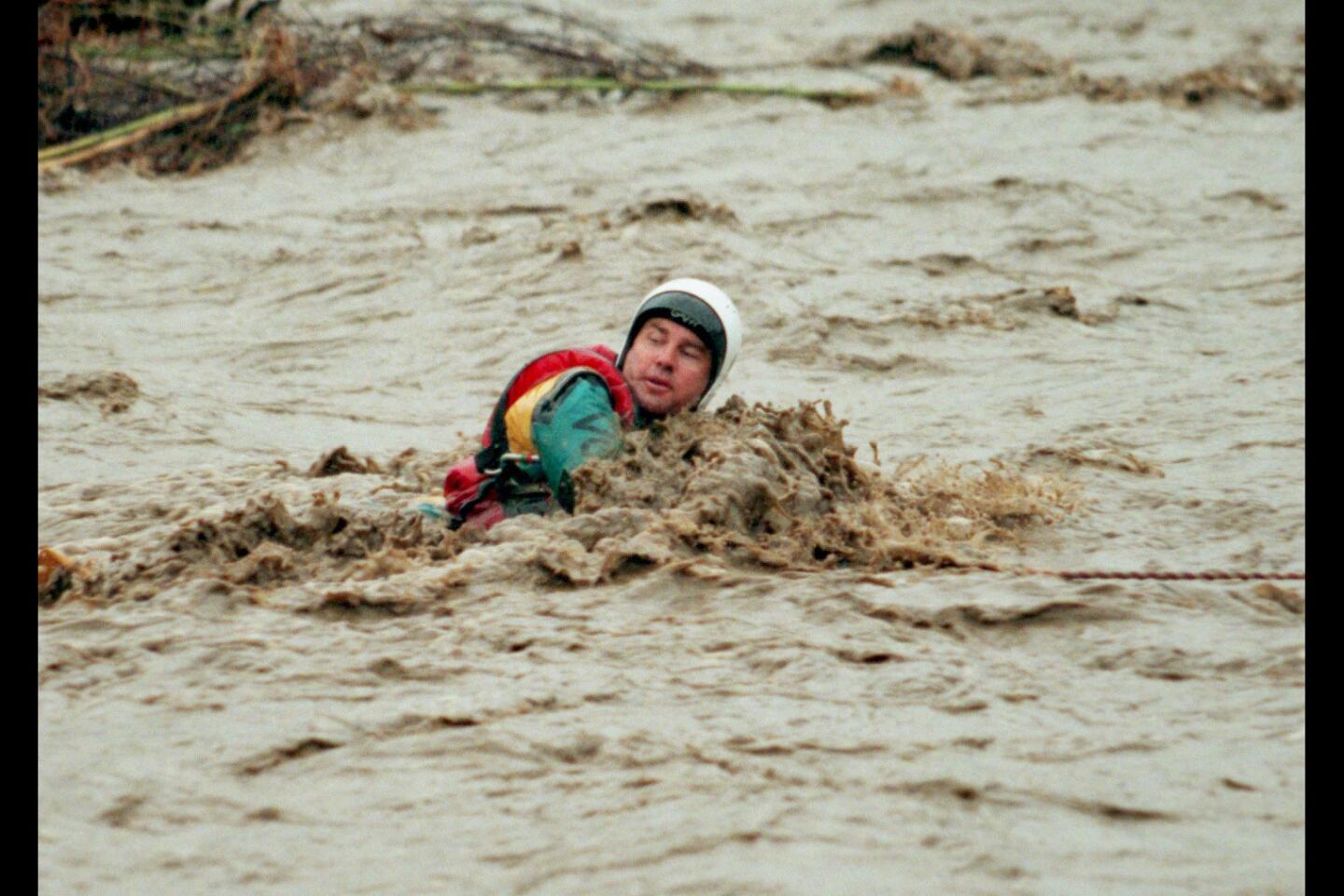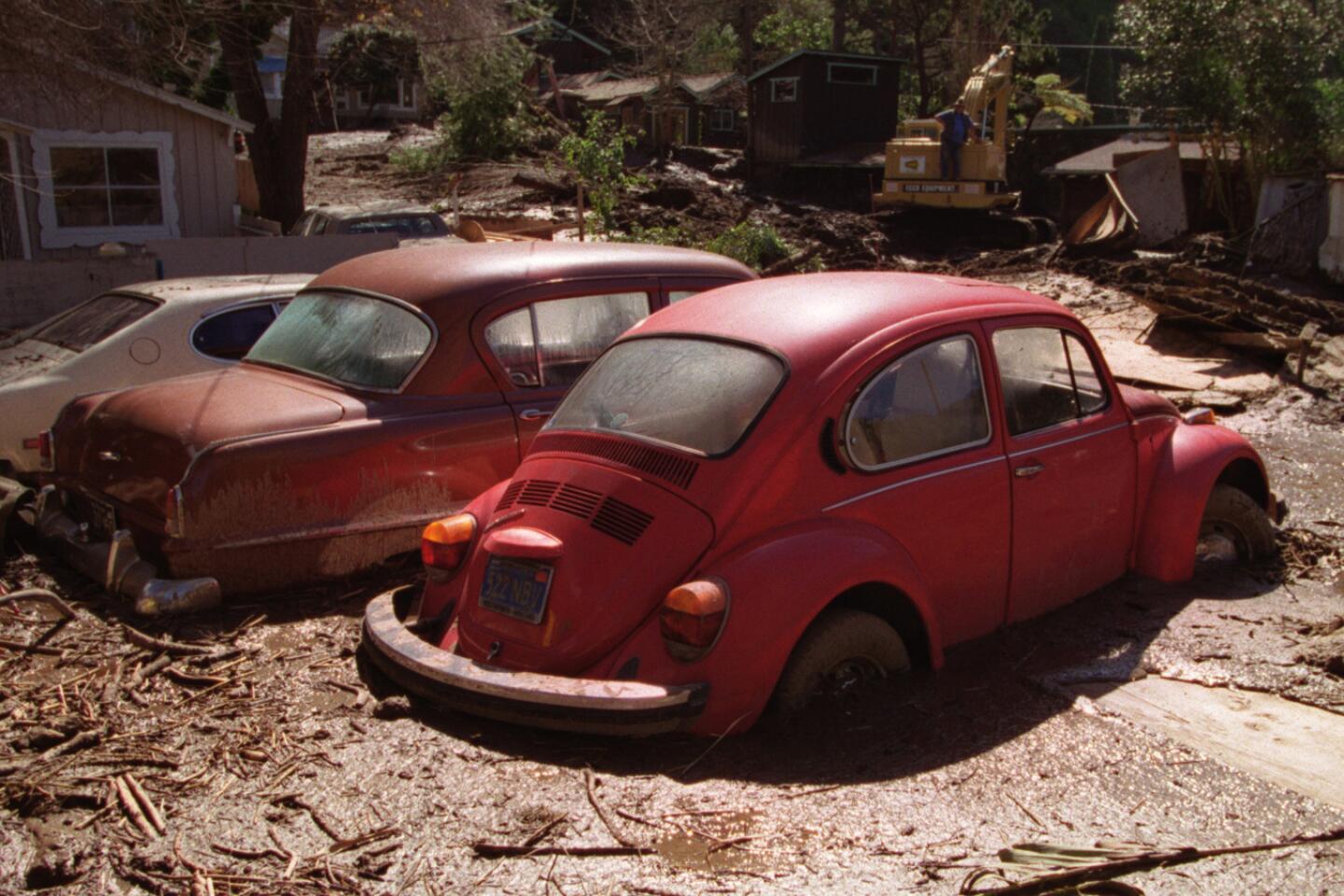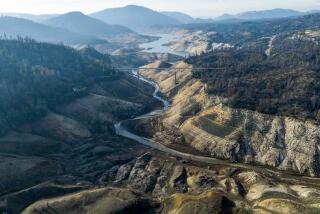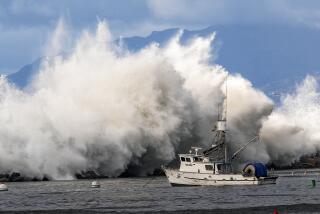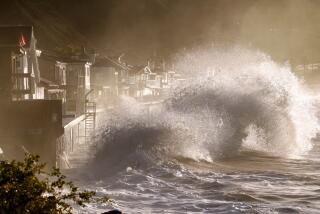El Niño keeps getting stronger, raises chance of drenching rains
The National Weather Service now expects El Niño to bring greater-than-average rainfall to virtually all of California, forecasters said for the first time Thursday.
The new forecast is significant because it raises the chance that El Niño will send big storms not only to Southern California and the San Francisco Bay Area — as has already been forecast — but also to the mountains that feed California’s most important reservoirs, which fuel water for much of the entire state. California’s largest reservoirs, Shasta Lake and Lake Oroville, are in the northern edge of the state.
If patterns from previous strong El Niños repeat, “there will be a number of significant storms that will bring heavy rains. What that brings will be floods and mudslides,” said Mike Halpert, deputy director of the National Weather Service’s Climate Prediction Center. “We’re more confident we’re going to be seeing El Niño through this winter.”
Water and Power is The Times’ guide to the drought. Sign up to get the free newsletter >>
Federal officials said they expect El Niño rains to ease drought conditions in California, but they’re not expected to eliminate the drought because the state is so far behind on precipitation.
The chance of heavy rain is strongest in Los Angeles and San Diego, where there is a 60% chance of a wet winter, a 33% chance of an average winter and less than a 7% chance of a dry winter.
In Silicon Valley, there is more than a 50% likelihood of a wet winter and less than a 17% chance of a dry winter. Farther north, there is a greater than 40% chance of a wetter-than-average rainy winter in San Francisco and Sacramento, and less than a 27% probability of a drier-than-normal winter.
With the latest prediction, the far northern parts of California — now reaching the border with Oregon — are expected to have a 33% to 39% chance of a wetter-than-average winter, and a 28% to 33% chance of a dry one. Last month, the climate forecast for that area was only equal chances of a wet or dry winter.
The latest winter climate forecast for the January-February-March time frame comes as El Niño is still very strong in the Pacific Ocean west of Peru. El Niño is a weather phenomenon that involves warming sea-surface temperatures and a change in wind that alters weather patterns in the atmosphere worldwide.
A powerful El Niño can move the jet stream that funnels wet winter storms over the jungles of southern Mexico and Central America north, dousing California and the southern United States with dramatic, punishing and potentially deadly winter rain.
Halpert said the power of the upcoming El Niño likely will be comparable to the 1982-83 and the 1997-98 El Niños. Those winters brought dramatic weather changes worldwide and extensive damage and flooding throughout California.
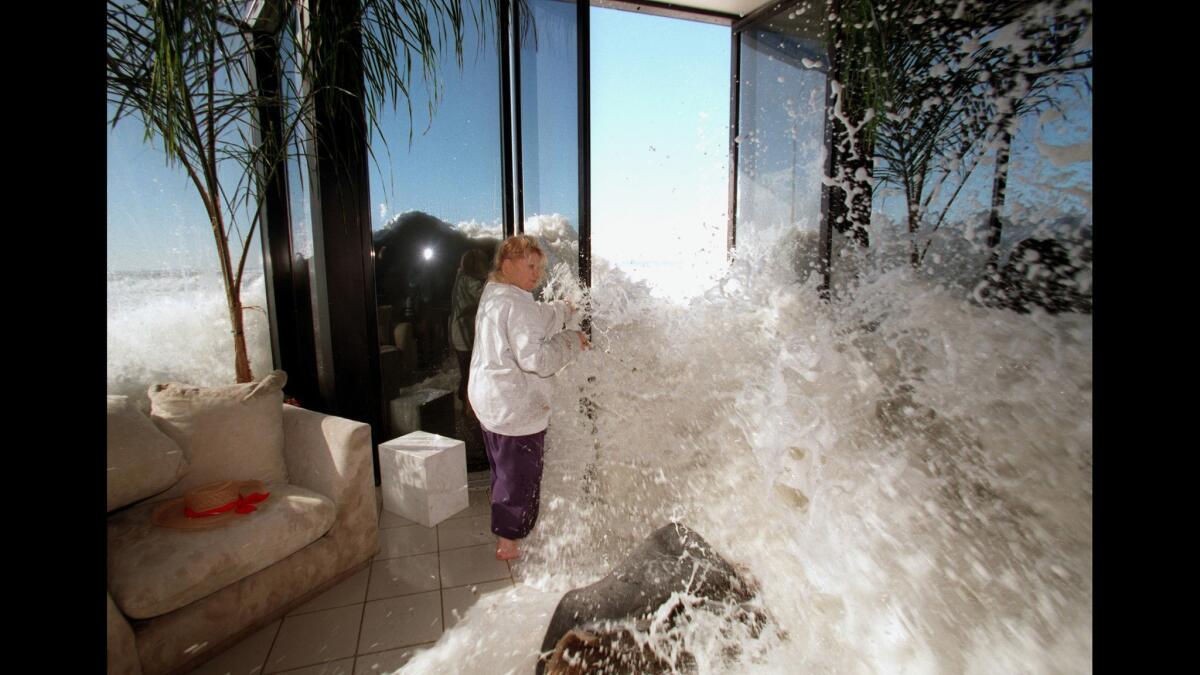
Marilyn Lane tries to shut a door as a wave rushes into her Solimar Beach home during a January 1998 storm.
“The Sierras got double their snowpack in ’83 and ’98, and places like Sacramento and San Francisco got double their rainfall. So the whole state got hosed,” said Bill Patzert, climatologist at NASA’s Jet Propulsion Laboratory in La Cañada Flintridge.
In early 1983, El Niño was so powerful that storms decimated piers all along the coast. A middle section of the landmark Seal Beach Pier collapsed, and the tip of Santa Monica’s historic pier washed into the sea.
One storm at the end of January 1983 damaged 1,000 homes between Santa Barbara and the Mexican border, with heavy surf worsened by unusually high tides pounding oceanfront neighborhoods.
“I knew it was all over when I saw the hot tub sail into the ocean,” a Malibu resident told The Times then. Los Angeles police said Sepulveda Boulevard at the top of Sepulveda Pass had turned into a “sea of mud.”
At the time, when there was very little understanding of El Niño, that winter came as a surprise.
A Los Angeles Times story then called El Niño “a strange, periodic warming trend in the Pacific,” with researchers unable to explain how the phenomenon worked.
California was better warned for El Niño’s arrival in the winter of 1997-98, but the damage was still severe.
In one storm at the end of February, the death toll climbed to nine. Among the dead: two California Highway Patrol officers whose car fell into a washed-out highway in San Luis Obispo County and a pair of Pomona College students whose car was crushed by a tree.
One devastating mudslide that hit Laguna Beach killed two people. Glenn Alan Flook, a lanky, athletic 25-year-old, had taken refuge in a neighbor’s home when it was struck by mud. He was thrown through a window as the room collapsed; his body was found wedged beneath a mobile home 50 yards downstream.
A mudslide also crushed much of the home of Nicholas Allen Flores, 43. His body was discovered in a fetal position on a green sofa in the family room.
That month in 1998 was the wettest February in Los Angeles on record. When the rains stopped, 17 people died, and more than half a billion dollars in damage had occurred in California by spring.
Officials have cautioned that even if El Niño rains came this winter, it would be all but impossible for them to end California’s punishing four-year drought. The state is so behind on precipitation, they say, that it would take many years of consistently wet winters to recover.
Additionally, the last massive El Niño to hit California was succeeded a few months later by its sister, La Niña, the demon of drought, Patzert said.
Once they arrive, the storms won’t just stop in L.A. They will continue across the southern United States, Patzert said, through Texas and into Florida.
“And historically, Florida has gotten clobbered by these storms,” Patzert said. “The flip side of that is the northern tier of the United states tends to be relatively mild and benign.”
That means the polar jet stream that made blizzards so intense in the Midwest and Northeast, like Boston, are generally weak in strong El Niño years. “So while we’re digging out of the mudslides in California, they’re golfing in Minneapolis,” Patzert said.
Follow Ron for the latest news in earthquake safety and El Nino: @ronlin. And for insightful graphics, check out @ranoa.
MORE ON EL NIÑO
A monster El Niño is likely, but there are ‘no guarantees’
The great El Niño of 1997-98, and what it means for the winter to come
Southland rain could be preview of the coming El Niño winter, experts say
More to Read
Sign up for Essential California
The most important California stories and recommendations in your inbox every morning.
You may occasionally receive promotional content from the Los Angeles Times.

